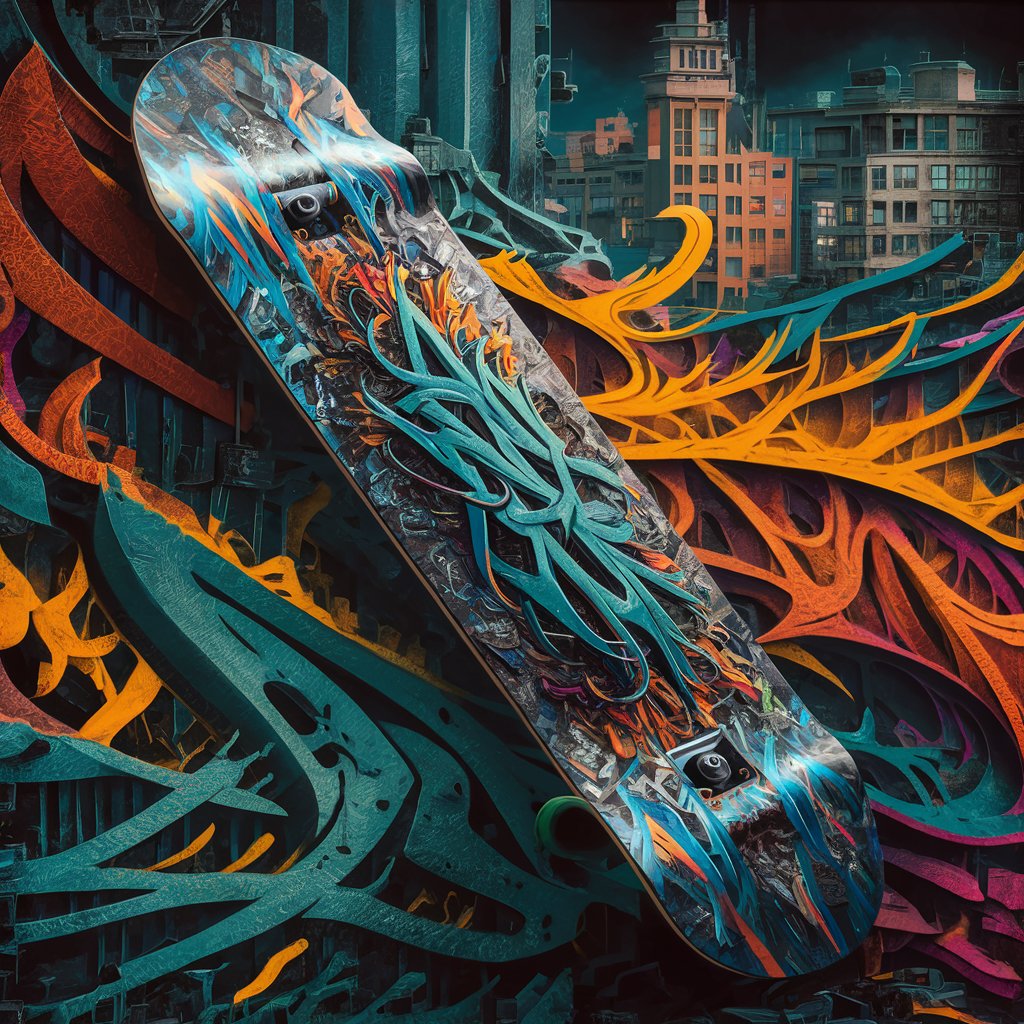How to Customize Your Skateboard Using UV DTF Transfers

How to Customize Your Skateboard Using UV DTF Transfers
Are you ready to take your skateboard design to the next level? In this tutorial, we'll show you how to use UV DTF transfers to create a stunning, custom skateboard deck. Whether you're a seasoned pro or a beginner, this guide will help you achieve a professional look with ease.

What You Need for Your UV DTF DIY Project
Before we dive into the process, let's gather all the materials you'll need:
- Skateboard deck: We used a black Moose skateboard, which is not very common and provides a great base for our design.
- UV DTF transfers: These transfers are perfect for hard surfaces like wood, glass, and metal.
- Squeegee: Essential for applying the transfer smoothly.
- Blue painter's tape: Helps ensure your transfer is applied straight and without bubbles.
Preparing Your Skateboard Deck
Start by prepping your skateboard deck. If your deck has any shiny or uneven surfaces, don't worry—the UV DTF transfer will cover most imperfections.
Applying the UV DTF Transfer
- Position the Transfer: Begin with the largest and most challenging transfer. For this project, we started with "The Gauntlet" design. Position the transfer on the deck, ensuring it's straight and aligned to your liking.
- Secure with Tape: Use blue painter's tape to hold the transfer in place. This will prevent it from shifting during application.
- Peel and Stick: Carefully peel back the white layer of the transfer. Unlike vinyl, UV DTF transfers are not forgiving once they stick, so make sure it's perfectly aligned.
- Squeegee the Transfer: Use your squeegee to apply the transfer, starting from the center and working your way out to avoid bubbles. Apply firm, even pressure to ensure a smooth application.
Ensuring a Perfect Transfer
After applying the transfer, go over it several times with the squeegee to ensure it adheres well. If any corners lift during peeling, simply squeegee them back down.
Adding Additional Elements
For this project, we also added a QR code using Quick QR Art, an AI program that creates scannable artwork QR codes. Position and apply the QR code transfer just like the main design.
Final Touches
Once all transfers are applied, carefully peel off the blue tape and give the entire deck one last squeegee to ensure everything is secure.
Admire Your Work
Your custom skateboard deck is now complete! The UV DTF transfers provide a vibrant, durable finish that looks fantastic. Whether you're mounting it on the wall or hitting the skate park, your deck is sure to turn heads.
FAQS: Things to Know More About UV DTF Transfer
Why Choose UV DTF Transfers?
UV DTF transfers are a game-changer for customizing hard surfaces. Unlike traditional stickers, they offer a 3D effect and individual lettering, making your designs pop. Plus, they adhere permanently without the need for heat, making the process straightforward and accessible.
Is it True that UV DTF is for Hard Surfaces Only?
Yes, it is true that UV DTF (Direct-to-Film) transfers are designed specifically for hard surfaces. These transfers are not suitable for fabrics or clothing. UV DTF transfers are ideal for materials such as glass, metal, wood, plastic, and other solid surfaces. They adhere strongly and permanently to these surfaces without the need for heat, making them a versatile option for customizing a wide range of items.
What are the Difference Between UV DTF and DTF Heat Transfers?
UV DTF (Direct-to-Film) and DTF heat transfers differ primarily in their printing technologies and applications. UV DTF uses UV-curable inks and a laminating process to create vibrant, durable designs on hard surfaces like glass, metal, and wood. It involves printing on a PET film, laminating it, and then transferring the design without heat. This method offers instant drying, water resistance, and a 3D raised effect.
In contrast, DTF heat transfers use water-based inks and require a heat press to transfer designs onto fabrics such as t-shirts and hoodies. The process includes printing on a PET film, applying adhesive powder, and heat pressing the design onto the fabric. DTF is ideal for textile applications, providing flexibility and vibrant colors on soft surfaces.
In summary, UV DTF is best for hard surfaces with a durable finish, while DTF heat transfers excel in fabric applications.
Conclusion
Customizing your skateboard with UV DTF transfers is a fun and rewarding project. With the right materials and a bit of patience, you can create a professional-looking deck that showcases your unique style. So grab your squeegee and get started on your next masterpiece!
